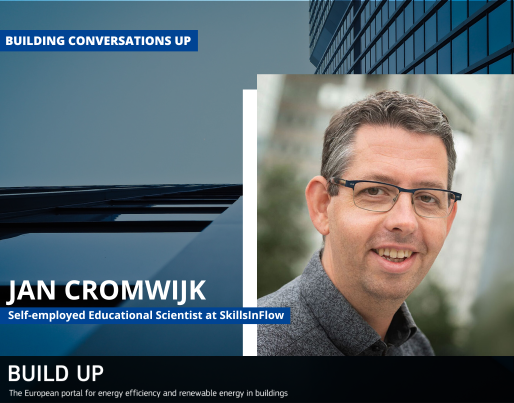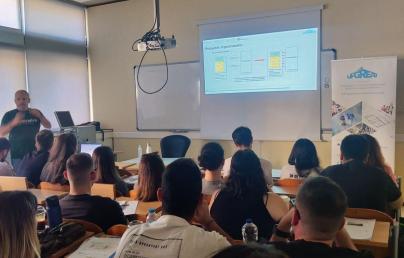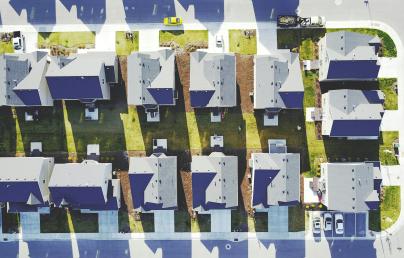Jan Cromwijk: ‘Thinking in terms of skills prevents mismatches and contributes to sustainable employability’

Jan Cromwijk: ‘Thinking in terms of skills prevents mismatches and contributes to sustainable employability’
As an educational scientist, Jan analyses the impact of transitions on knowledge ecosystems in sectors and industries. This is so that these can take targeted action to put new knowledge into use (valorisation). This helps in the development of sound strategies to address skills gaps by setting up task-based qualifications, task-oriented learning objectives and developing learning resources. In the BUILD UP Skills Advisor app Jan is working on connecting skills data with learning offers available in the learning ecosystems. As a result, those interested in upskilling can follow personalised learning pathways and the achieved learning results can be included in digital skills portfolios. Jan is currently active in a string of EU projects working on skills needed to sustain the built environment, including BUSLeague, BUS-GoCircular, SEEtheSkills, ARISE and BUS-NL.
BUILD UP (BUP): How has the type of skills in the building and construction sector evolved in recent years?
JAN CROMWIJK (JC): With regards to skills needed for sustaining the built environment, I see a number of currents feeding into the renovation wave. Most of the BUILD UP Skills projects at the start of the BUILD UP Skills initiative (2011) focused initially on practical skills related to energy and avoidance of energy loss. In the period 2013-2018, this was broadened to advisors, engineers, and architects; also including several projects with a focus on more effective use of Building Information Models (BIM). Between 2019 and 2024 the landscape became more diverse and inclusive, especially by addressing skills gaps in full value chain approaches, because upskilling a few links in the chain often leads to skills inequality and disappointment instead of improved cross-craft collaboration. It also became clear that besides energy there are multiple currents empowering the renovation wave; digitalisation, electrification, circularity, and climate adaptation are becoming both drivers and enablers. This further strengthens the shift from sustaining buildings to sustaining the built environment, where buildings provide and interchange value with the environment and its inhabitants.
BUP: How is the EU addressing the skills gap that the industry is currently experiencing?
JC: The EU is quite active with long-term programmes and initiatives to address skills gaps, such as BUILD UP Skills, the Erasmus+ programme for education, training, youth, and sport, and the European Year of Skills that helps people get the right skills for quality jobs and supports companies in addressing skill shortages in Europe. Besides that, many EU-umbrella organisations such as ACE, ICLEI, REHVA, UIPI, Europe-On, GCP-Europe and supplier networks such as EHPA, EVIA, Solar Power Europe and EU-BAC are actively putting transition skills on the agenda by participating in EU projects under, for example Erasmus+, LIFE, H2020, and Horizon Europe.
BUP: Is the Netherlands experiencing a lack of skilled workforce? What solutions is the country implementing?
JC: Yes, the Netherlands is experiencing a lack of skilled workforce in all the links of the value chain. That is why five technical sectors have launched the Aanvalsplan Techniek 'Technology Attack Plan'. This plan makes suggestions to redesign the labour market for technicians. The new system, called the Golden Gate, should become the central place for starters, lateral entrants, newcomers, and experienced professionals who are considering a switch to a (different) technical sector. The goal is to fill 60.000 vacancies structurally in the coming 10 years.
Sufficiently developed human capital, with the right knowledge and qualities, is necessary to answer the transition needs in the Netherlands, so ten Dutch top sectors have joined forces in defining and implementing their Human Capital Agenda. The basis is optimal cooperation between vocational and higher education, the business community, and research institutions, with Human Capital Agenda Topsector Energy as one of the transition system integrators.
‘The Netherlands is experiencing a lack of skilled workforce in all links of the value chain’
BUP: Can you go into some details of specific initiatives or programmes which are in place in your country to promote skills development in the construction and building sector?
JC: The Dutch BUILD UP Skills initiative, BUILD UP Skills-NL (BUS-NL), is connecting with ongoing and upcoming Dutch initiatives and feeding into them by identifying skills required to accelerate the sustainability of the built environment. BUS-NL works together with stakeholders and innovation networks to identify opportunities and barriers and works with trainers and training institutes on current and innovative forms of further training. Some examples of these innovative forms are the recently developed innovative e-learning modules on Circular Skills and the application of gamification principles to train the principles of circularity.
The Agenda focusses on implementing Learning Communities where companies, educational institutions, and research institutions work closely together so that learning, working, innovation, and research are optimally connected. This is because innovation has the greatest chance of success when people can develop, internalise, and apply innovations in practice.
Katapult is a network of over 550 partnerships between education and business and is continuously growing. Their objective is to improve cooperation between education, business, and society. This is done, for example, by business professionals who provide lessons or by students conducting research for an SME company during their training.
People Make the Transition is a partnership of parties that implement the energy transition. Their mission is a sustainable built environment. This is achieved by working together, learning, innovating, and accelerating the energy transition. They are especially important with respect to interlinking sectors with upcoming niches in the transition in non-competitive transition collaborations. This empowers the adaptation of innovations emerging from the niches into the existing regimes.
BUP: How can companies in the construction industry encourage and facilitate the upskilling of their workforce?
JC: At the sector level, the construction industry is encouraging people to enter the sector and to upskill themselves. For example, by several targeted and modern campaigns.
Jij gaat het maken (‘You're going to make it’)
De makers van morgen (‘The makers of tomorrow’)
Je kunt zoveel meer in de techniek (‘You can do so much more with technology’)
At the individual company level, I observe that many companies are in a lock-in with their current business models and related primary processes. Due to a competitive market and scarcity of workforce, many entrepreneurs are affected by the Red Queen Effect, and in fact, staying in the same place instead of making an impact in the transition of the built environment. To break out of this lock-in, I encourage entrepreneurs to embrace an abundance mindset. By dedicating time to set new goals and developing or adapting new primary processes to reach those goals a shift from the red competition ocean to the blue transition ocean is possible and thereby unlocking the abundance of possibilities to create and deliver value. In the Netherlands I observe that entrepreneurs who did this kind of escape over the last seven years are often quite successful, and in most cases were not hampered by scarcity in the labour market anymore. This is because they are attractive employers where people want to work, which is what in fact leads to more scarcity for the red ocean players.
‘Due to a competitive market and scarcity of workforce, many entrepreneurs are affected by the Red Queen Effect, and in fact, staying in the same place instead of making an impact in the transition of the built environment’
BUP: Do you think there is a way the construction industry can leverage digital technology to develop skills more effectively?
JC: The construction industry in the Netherlands has started working together towards a more skills-oriented labour market. The tightness of the labour market requires a different approach to talent in which we look at the skills and experiences, or 'skills', that people do have. Thinking in terms of skills prevents mismatches and contributes to sustainable employability. The crux is that the skills of (potential) employees become more transparent and validated in a reliable manner. This is preferably based on transition studies underpinned by skills forecasts, and skills gap analysis. Leading more and more often to actual data-driven insights into the required skills and skills available at macro, meso, and micro levels.
The construction industry can leverage digital technology to develop skills more effectively by using task-based definitions of skills and related Units of Learning Outcomes, to deliver personalised learning pathways. Often existing in a mixture of different learning arrangements, such as e-learning, gamified learning, learning on-site, toolboxes, practical training centres, etc. When Units of Learning Outcomes are task-based, it becomes possible to link learning results from practice, learning in training centres, and learning in regular education systems where both formal and informal (micro-)credentials count. With the BUILD UP Skills Advisor app and EU construction skills projects as important learning grounds, we will be able to prove these principles both at the EU level and at the National level.


